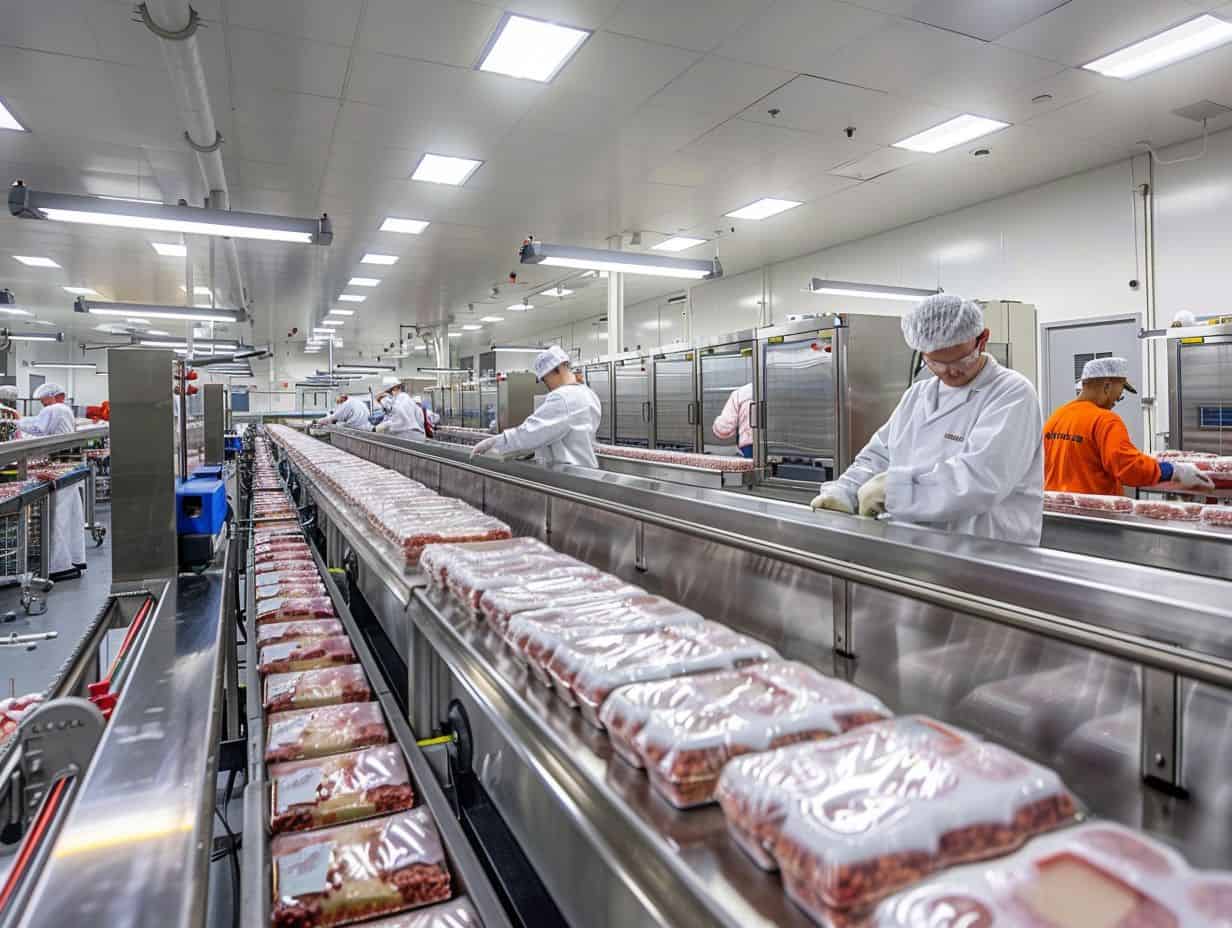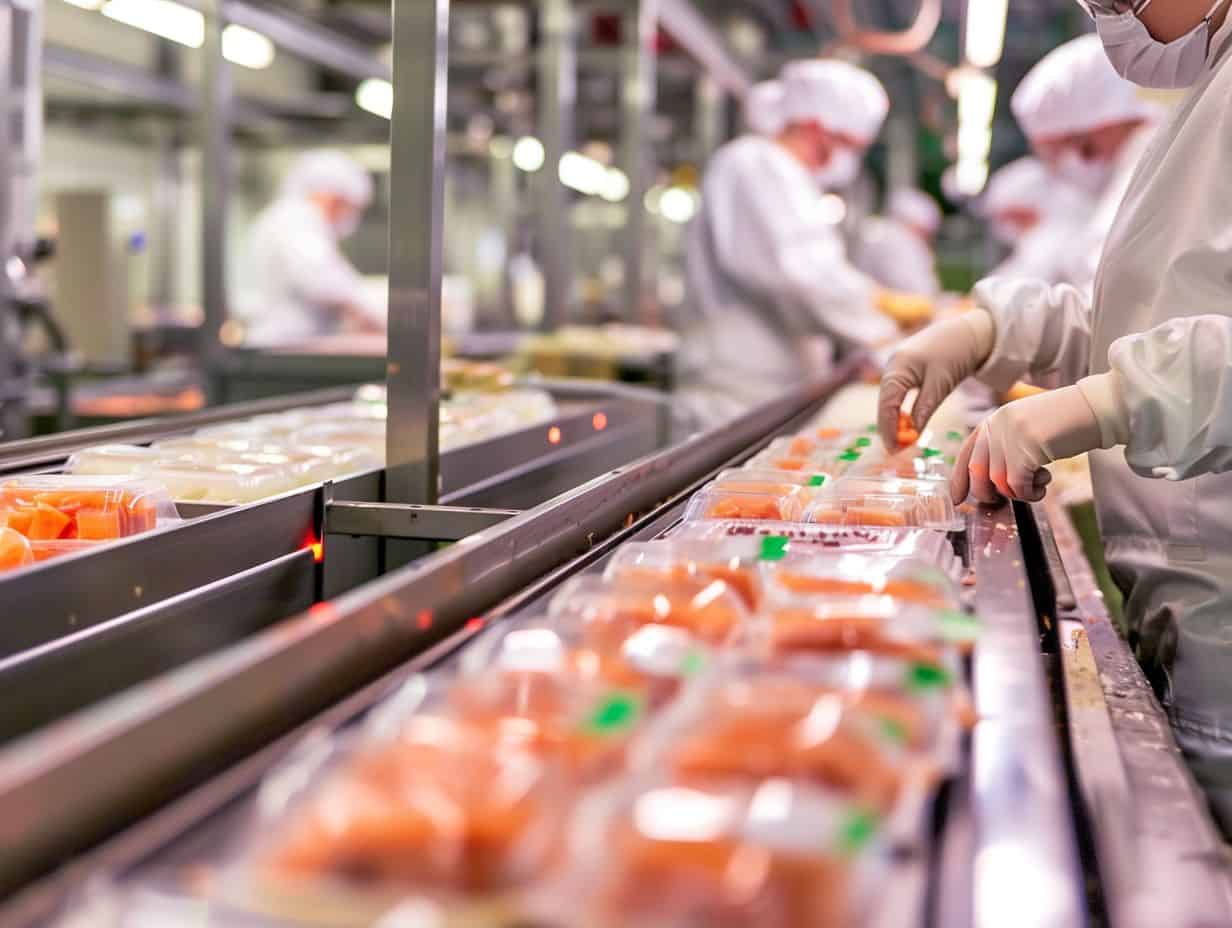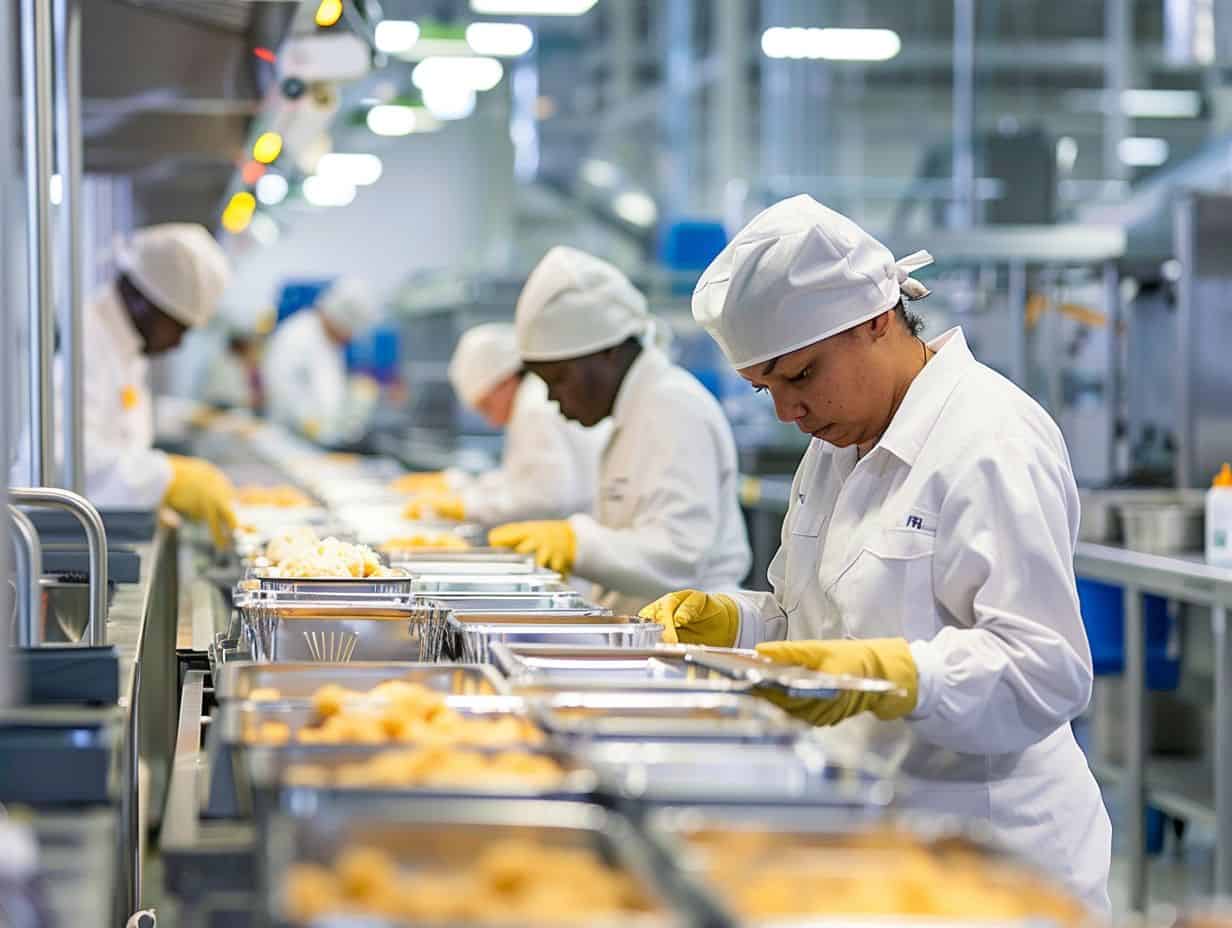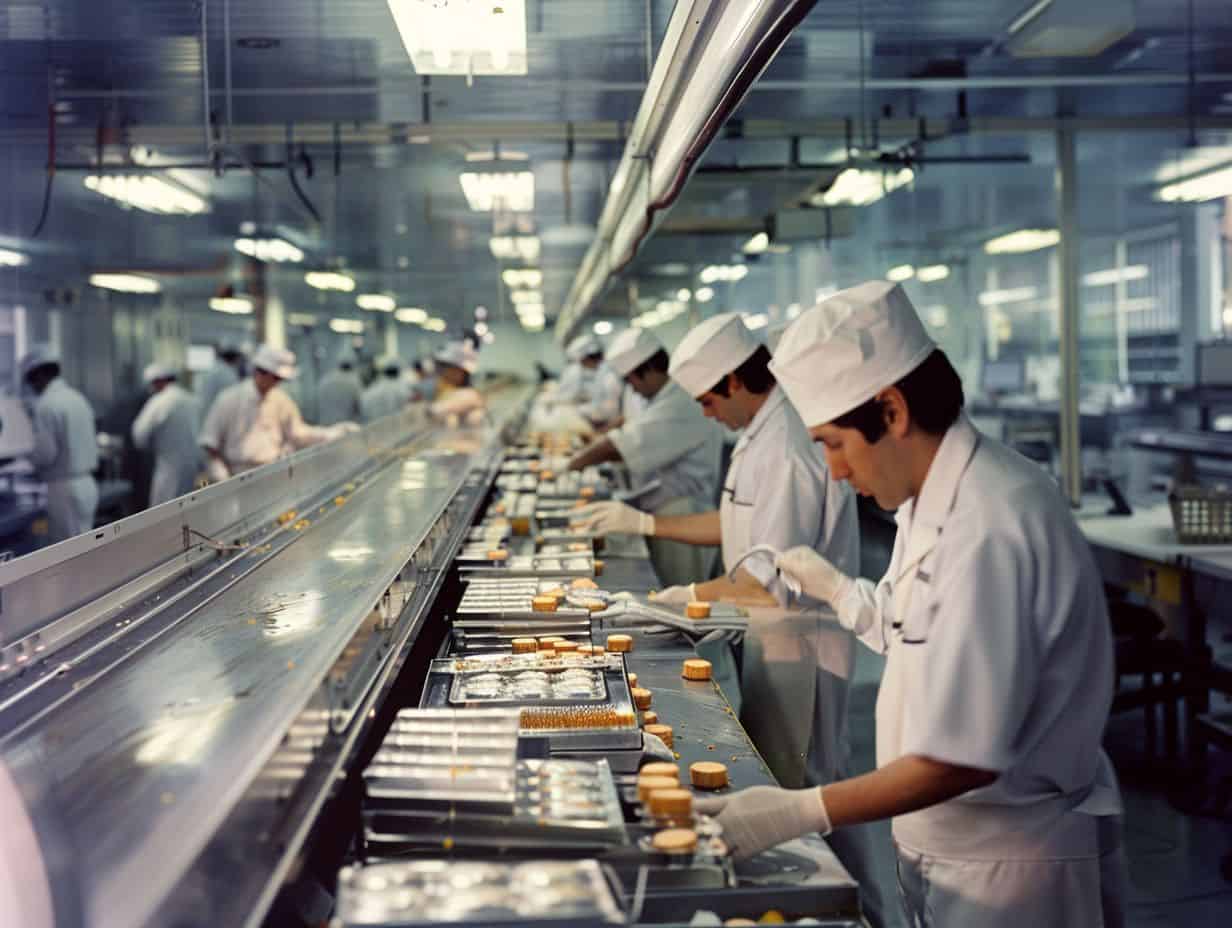The precision of packaging is vital in the production of Meals Ready-to-Eat (MREs), as it ensures hygiene, longevity, and overall quality of the food.
This exploration will cover the significance of packaging precision for MREs, the repercussions of inadequate packaging, factors to be taken into account, types of packaging materials employed, quality control measures, and recommended practices.
Take part as we delve into the realm of MRE manufacturing and the significance of precision in packaging.
The Importance of Packaging Precision
Recognizing the significance of precise packaging in MRE production is essential for guaranteeing the safety, quality, and durability of the products. Precision in packaging involves multiple aspects such as design, materials, and manufacturing processes, all focused on preserving the integrity and safeguarding of the items during their shelf life.
Why is Packaging Precision Essential for MREs?
Precision in packaging is crucial for MRE production as it helps to protect the food items from contamination, maintain their freshness, and prolong their shelf life. The detailed packaging process, which includes aseptic packaging and adherence to quality control standards, is necessary for preserving the nutritional content and overall quality of the meals.
Effective packaging serves not only to shield MREs from external pollutants but also to ensure their integrity during storage and transportation. By employing advanced packaging methods like modified atmosphere packaging and vacuum sealing, manufacturers can extend the shelf life of MREs while safeguarding them from moisture, oxygen, and light exposure. Following strict packaging regulations not only guarantees food safety but also boosts consumer trust in the quality and consistency of the meals.
What are the Consequences of Poor Packaging in MREs?
Inadequate packaging in MREs can lead to negative effects on product quality, including contamination risks, compromised seal integrity, and shortened shelf life. Insufficient packaging materials or seal failures can create food safety hazards, impacting the overall quality and safety of the meals.
This emphasizes the importance of selecting suitable packaging materials and ensuring proper seal integrity during MRE production. Choosing packaging materials that are durable, resistant to external factors, and effective in preserving product freshness is essential. Maintaining seal integrity throughout the production and distribution processes is crucial for preventing contaminants from compromising the meals.
By prioritizing quality packaging materials and seal integrity, manufacturers can significantly reduce the risks associated with poor MRE packaging, ensuring that the meals are safe for consumption and maintain their quality and longevity.
Factors to Consider for Packaging Precision in MRE Production
In achieving packaging precision in MRE production, various essential factors need to be taken into account to maintain hygiene standards, enhance shelf life, guarantee durability, and apply efficient preservation methods. Inspection procedures are crucial in confirming the packaging’s integrity and adherence to quality control standards.
1. Hygiene
Maintaining high hygiene standards in MRE production is crucial for ensuring the safety and quality of the packaged meals. Practices around hygiene, along with stringent quality control measures and thorough inspection procedures, are vital for preventing contamination and maintaining packaging precision.
Implementing rigorous hygiene protocols not only helps protect against microbiological hazards but also plays a significant role in preserving the taste, texture, and shelf life of MREs. Quality control measures are involved at various stages, starting from ingredient sourcing to final packaging, to ensure compliance with established standards. Inspection procedures further support these efforts by identifying potential risks or deviations early on, enabling prompt corrective actions.
This combined approach not only reduces the risk of contamination but also upholds the overall integrity and safety of MRE packaging.
2. Shelf Life
Optimizing the shelf life of MREs through precise packaging techniques is crucial to maintain the freshness and quality of the food items.
By implementing preservation methods such as vacuum sealing or nitrogen flushing, MREs can be protected from the harmful effects of oxygen exposure, which can result in food spoilage. Adequate temperature control, whether through refrigeration or monitoring ambient temperatures during storage and transportation, is vital in preventing microbial growth and enzymatic reactions that can lead to food degradation. The use of moisture-resistant packaging materials also enhances the protection of MREs against the risks of mold and bacteria growth, ultimately extending their longevity and preserving their nutritional value.
3. Durability

Ensuring the durability of MRE packaging is essential for protecting the contents during storage, transportation, and handling. Strong barrier properties, seal integrity, and protective features are critical for maintaining product protection and integrity throughout the supply chain.
Durable packaging solutions play a significant role in safeguarding MRE contents from external elements like moisture, light, and oxygen, which could compromise the quality and safety of the products. Seal integrity guarantees that the contents remain secure and unaffected by environmental factors during their journey from production facilities to end consumers. Robust packaging materials help reduce the risk of damage or contamination, thereby extending the shelf life and improving the overall quality of MREs.
By emphasizing durability in packaging design, manufacturers can ensure that their products reach customers in optimal condition, meeting stringent quality standards and enhancing consumer satisfaction.
Types of Packaging Materials Used in MRE Production
Various packaging materials are used in MRE production to meet different needs. This includes flexible packaging for versatility, rigid packaging for structural support, and vacuum packaging for prolonging shelf life. These materials provide different barrier properties and moisture resistance to safeguard the product.
1. Flexible Packaging
Flexible packaging is commonly used in MRE production because of its adaptability, lightweight characteristics, and resistance to moisture. It improves packaging efficiency and provides dependable protection for products, making it suitable for a variety of MREs.
The adaptable nature of flexible packaging allows for easy customization and branding possibilities, which can help products differentiate themselves on shelves and appeal to consumers. The moisture-resistant properties of flexible packaging are crucial for maintaining the freshness and quality of MREs, extending their shelf life. By optimizing the packaging design, MRE manufacturers can decrease material waste and lower production costs, promoting sustainability and cost-effectiveness throughout the process.
2. Rigid Packaging
Rigid packaging is important for MREs that need structural support and increased durability during storage and transportation. Its strong design and seal integrity help maintain product freshness and integrity, making it a dependable option for specific MRE products.
The design of rigid packaging plays a critical role in safeguarding MREs from external factors such as moisture, light, and oxygen, which could impact the quality and shelf life of the food inside. By providing a strong barrier, rigid packaging helps preserve the nutritional value and taste of MREs over a prolonged period. The customized packaging design allows for effective storage and simple handling, ensuring that MREs retain their shape and quality, even in challenging military or emergency scenarios.
3. Vacuum Packaging
Vacuum packaging is commonly used in MRE production to prolong the shelf life of perishable items. This is achieved by eliminating air and sealing the contents in a controlled environment. The method improves preservation techniques, allows for temperature control, and ensures the longevity of the packaged MREs.
Creating a vacuum seal significantly reduces the risk of oxidation and microbial growth within the MRE packages, resulting in a longer-lasting product. The absence of oxygen helps maintain the freshness and flavor of the food items, making them more appealing to consumers.
Vacuum packaging also enables precise temperature control during storage and transportation, further ensuring the quality of the MREs. This packaging method plays a key role in preserving the nutritional value and taste of the food, guaranteeing that consumers receive high-quality meals even in challenging conditions.
Quality Control Measures for Packaging Precision
Implementing strict quality control measures is crucial for ensuring precision in packaging during MRE production. Visual inspection, leak testing, and microbiological testing are key aspects of quality assurance protocols, helping with compliance with regulations and upholding product integrity.
1. Visual Inspection

Visual inspection serves as a critical quality control measure in MRE production, facilitating the assessment of packaging integrity, product quality, and seal robustness. It is instrumental in upholding product integrity and verifying compliance with required standards.
Through visual inspection of the packaging, manufacturers can detect any defects or imperfections that might jeopardize product safety or shelf life. This inspection process entails examining the packaging material for tears, punctures, or misalignments that could introduce contamination.
The scrutiny of seal integrity via visual inspection ensures the protection of MRE contents from external elements like moisture and air, maintaining their freshness and quality. These thorough inspection protocols play a significant role in upholding strict product standards and regulatory adherence in MRE manufacturing, ultimately ensuring the safe and reliable delivery of products to consumers.
2. Leak Testing
Leak testing plays a significant role in MRE production as a vital quality control measure to identify potential issues in seal integrity that could compromise product safety. By utilizing hazard analysis and critical control points to detect leaks early, manufacturers can ensure the packaging’s efficacy and reduce contamination risks.
The process includes employing various testing methods like vacuum decay, pressure decay, or helium leak detection to evaluate seal integrity accurately. Thorough testing procedures help minimize risks such as microbial growth or spoilage resulting from inadequate seals, thus protecting the quality and shelf-life of MRE products.
Effective leak testing not only aligns with regulatory standards but also builds consumer confidence by offering dependable and secure food packaging solutions.
3. Microbiological Testing
Microbiological testing is a necessary step in MRE production to confirm the absence of harmful pathogens and guarantee the microbiological safety of the packaged meals. This quality control procedure is vital for preventing contamination, ensuring quality assurance, and upholding high food safety standards.
By conducting comprehensive microbiological testing, food manufacturers can identify any potential contamination early on in the production process, allowing for prompt corrective actions to be taken. These tests also assist in evaluating the efficacy of sanitation practices and pinpointing any areas that may require improvements to prevent microbial growth.
Microbiological testing plays a critical role in meeting regulatory requirements and certifying that MRE products adhere to food safety standards. It verifies that the final products delivered to consumers are safe for consumption, minimizing the risk of foodborne illnesses and safeguarding the brand’s reputation.
Best Practices for Packaging Precision in MRE Production
Following best practices is essential to achieve precise packaging in MRE production. Proper sanitation and sterilization, accurate measurement and filling processes, and adequate sealing and labeling are basic steps to uphold product integrity and guarantee the quality of the packaged meals.
1. Proper Sanitation and Sterilization
Maintaining proper sanitation and sterilization protocols in MRE production is crucial for preventing contamination risks and upholding food safety standards. This strict adherence to sanitation and sterilization practices helps reduce the chances of harmful contaminants affecting the quality of the meals and also plays a significant role in extending the shelf life of MREs.
The careful selection of packaging materials that are durable, tamper-resistant, and compliant with food safety regulations further helps in safeguarding the integrity of the contents within. Consequently, these meticulous steps collectively ensure that consumers receive MREs that are both nutritious and delicious, without any potential health hazards.
2. Accurate Measurement and Filling
Accurate measurement and precise filling of MRE packaging play a crucial role in maintaining portion consistency, protecting the product, and optimizing manufacturing efficiency. Precision in these processes contributes to enhancing the overall quality of the packaged meals and supporting smooth production workflows.
Meticulous measurement and filling of MRE packaging ensure that each serving size remains consistent, leading to customer satisfaction with uniform portions. Precise filling techniques also help protect the contents from damage or contamination during handling and transportation, thereby preserving the food’s integrity. Efficient and precise filling not only affects the product quality but also improves the production process by reducing waste and optimizing resources in MRE manufacturing.
3. Adequate Sealing and Labeling

Sufficient sealing and labeling practices play a vital role in MRE production to uphold seal integrity, safeguard the contents, and communicate essential information to consumers. Effective sealing methods and accurate labeling are integral to the overall packaging design and are crucial in maintaining product freshness and safety.
The integrity of a proper seal not only preserves the freshness of the food inside but also prevents potential contamination. Detailed labeling offers crucial information such as expiration dates, nutritional content, and allergen warnings to help consumers make informed decisions. A well-sealed and clearly labeled MRE not only boosts consumer confidence in the product but also demonstrates the manufacturer’s dedication to quality and safety standards. With increasing consumer awareness of food safety and quality, the importance of meticulous sealing and informative labeling in MRE packaging cannot be understated.
Frequently Asked Questions
What is packaging precision and why is it important in MRE production?
Packaging precision refers to the careful and accurate packaging of MREs (Meals Ready to Eat) in order to maintain their hygiene and longevity. It is important in MRE production to ensure that the food is safe to consume and can last for an extended period of time without spoiling.
What are the key factors to consider for packaging precision in MRE production?
The key factors for packaging precision in MRE production include using high-quality materials, maintaining proper sanitation, and implementing strict quality control measures. These factors help to ensure that the food remains safe and fresh, even in harsh environments.
How does packaging precision affect the shelf life of MREs?
Packaging precision plays a crucial role in determining the shelf life of MREs. If the food is not properly packaged, it can spoil quickly and become unsafe to consume. On the other hand, precise packaging techniques can extend the shelf life of MREs by preserving the food’s quality and freshness.
What are the most common packaging methods used in MRE production?
The most common packaging methods for MREs include vacuum sealing, retort pouches, and modified atmosphere packaging. These methods help to eliminate oxygen and reduce moisture, which are key factors in food spoilage.
How does packaging precision contribute to maintaining hygiene in MRE production?
Packaging precision is essential for maintaining hygiene in MRE production as it prevents contamination from external factors such as bacteria, dust, and insects. Proper packaging also ensures that the food remains free from any potential sources of contamination during transportation and storage.
Are there any regulations or standards for packaging precision in MRE production?
Yes, there are strict regulations and standards set by government agencies and food safety organizations to ensure packaging precision in MRE production. These regulations cover aspects such as packaging materials, labeling, and storage conditions to maintain hygiene and longevity in MRE production.


